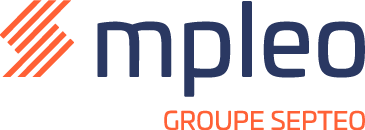
5 ways to use HR Artificial Intelligence to improve the employee experience
In a world that is constantly evolving, the ability to adapt and reinvent oneself has become essential – both for individuals and organisations. Today, businesses face the rapid rise of Artificial Intelligence (AI), which has long been perceived as a threat in the collective imagination. AI is gradually transforming the everyday lives of organisations and their people, reshaping working methods and employee expectations. At the heart of HR concerns lies a key question: can HR Artificial Intelligence – and more specifically Generative AI – enrich the employee experience? Whether through the automation of certain tasks, the personalisation of career journeys, or strengthening employer branding, AI has much to offer. In this article, discover how these tools can help you engage more effectively with your employees and optimise their commitment.
Understanding HR Artificial Intelligence: key insights into these new tools
First, let’s return to the basics. What exactly is Artificial Intelligence, and how can it be used in Human Resources? Artificial Intelligence encompasses technologies that enable machines to mimic certain human abilities, such as data analysis, learning, and decision-making. In other words, AI allows systems to process large volumes of information, recognise patterns, and generate predictions or actions – often more efficiently than humans.
Generative AI, meanwhile, is a specific form of AI that creates new content – text, images, or other outputs – based on existing data. Using advanced algorithms, it produces the requested content from prompts (instructions you can design). This generated content can take many forms: recommendations, instructions, images, emails, and much more.
Practical example: Imagine a company needing to analyse feedback from an internal survey. AI enables HR teams to identify recurring themes in employee responses more quickly – such as requests for additional training. Based on this data, algorithms can generate recommendations to enhance the employee experience, for example by adding new development programmes or creating mentoring schemes tailored to individual needs.

Advantages and challenges of integrating Generative AI into HR processes
Like any new tool, integrating Generative AI into HR processes brings significant benefits but also challenges.
The advantages
One major benefit is the automation of repetitive, low-value tasks such as email management or application screening. According to an OECD study (2023), these tools allow employees to focus on more strategic, meaningful work – boosting engagement.
By reducing workloads linked to tedious tasks, AI frees up time for higher-value activities, contributing to employee wellbeing. Importantly, this technology does not eliminate jobs but rather reshapes them, enabling tasks to be completed more quickly and efficiently without drastically altering responsibilities.
Practical example: Generative AI can act as a virtual assistant to help HR tailor training pathways to individual needs, enhancing both effectiveness and employee satisfaction.
The challenges
AI can also create difficulties, such as heightened work intensity through higher performance targets or more complex tasks. Learning to master these new tools can generate stress, particularly due to fears of increased managerial control or surveillance.
It is also important to remember that AI will never replace essential human skills such as empathy and creativity – areas where people must remain central.
For successful adoption, employee buy-in is critical. AI can become a powerful tool for employee advocacy, enabling HR to transform staff into employer brand ambassadors by encouraging them to share positive experiences. In short, while Generative AI can improve efficiency and employee experience, it must be integrated thoughtfully, considering both its strengths and limitations.

5 ways to use AI to improve employee experience
Generative AI offers a wide range of opportunities to enrich the employee experience. Here are five concrete ways to integrate it into your HR processes:
Personalise career paths and development
Generative AI can support workforce planning by analysing employee skills, aspirations, and performance to provide tailored recommendations. It identifies areas for growth and suggests specific training or projects, creating new opportunities and enabling employees to visualise motivating, personalised career journeys.
Generate real-time personalised feedback
By analysing performance reviews and annual appraisals, AI can generate instant feedback reports tailored to each employee. This enables HR and managers to adjust objectives or recognise achievements in real time.
Implement tailored wellbeing initiatives
AI algorithms can design personalised action plans to improve employee wellbeing. For instance, they might recommend work-life balance strategies or provide stress management advice. These suggestions can be adapted to individual preferences and situations, allowing HR to offer large-scale personalised support, thereby boosting satisfaction and retention.
Create and automate a consistent employee experience
Generative AI can automate various interactions, such as drafting emails, reports, or communications throughout the employee journey – from onboarding plans and evaluations to welcome messages.
By integrating chatbots, employees can ask real-time questions (e.g. on legal or administrative issues) and receive instant responses, easing the workload of HR teams. These tools help maintain fluid, consistent communication, strengthening engagement and satisfaction.
Turn employees into employer brand ambassadors
AI can analyse employee feedback to identify moments of satisfaction and generate engaging content such as testimonials or internal initiatives. Encouraging employees to share positive experiences on social media or internally strengthens employer branding while highlighting employee contributions to organisational success.

Integrating HR Artificial Intelligence should go beyond immediate efficiency gains. It must align with a clear strategic vision. It is not simply about generating automated meeting notes – it is about defining where you want to take your employees, and why. Take time to reflect on your current practices: what works well? What could be improved? AI should serve as a lever for your long-term objectives, aligned with your organisation’s values and strategic direction.
Source: The Impact of AI on the Workplace: Evidence from OECD Case Studies of AI Implementation | OECD
